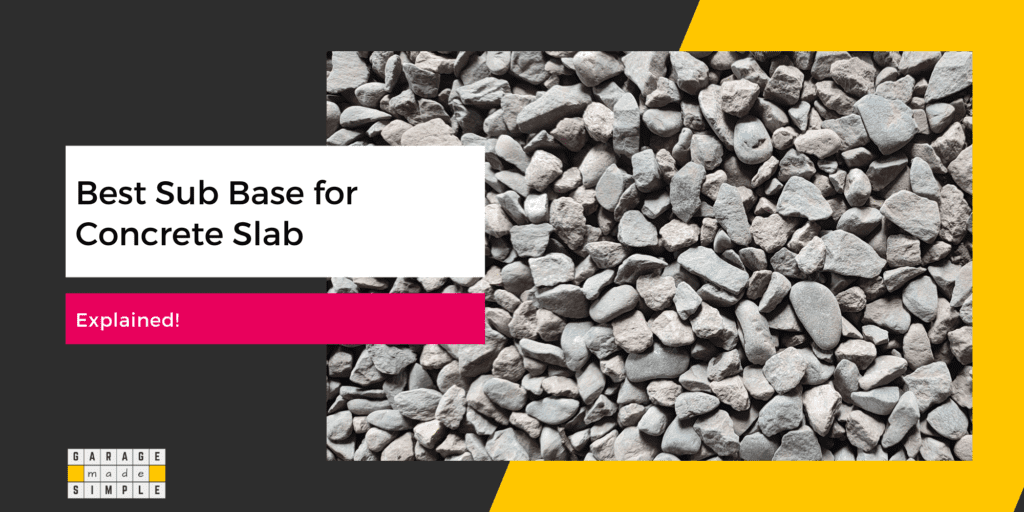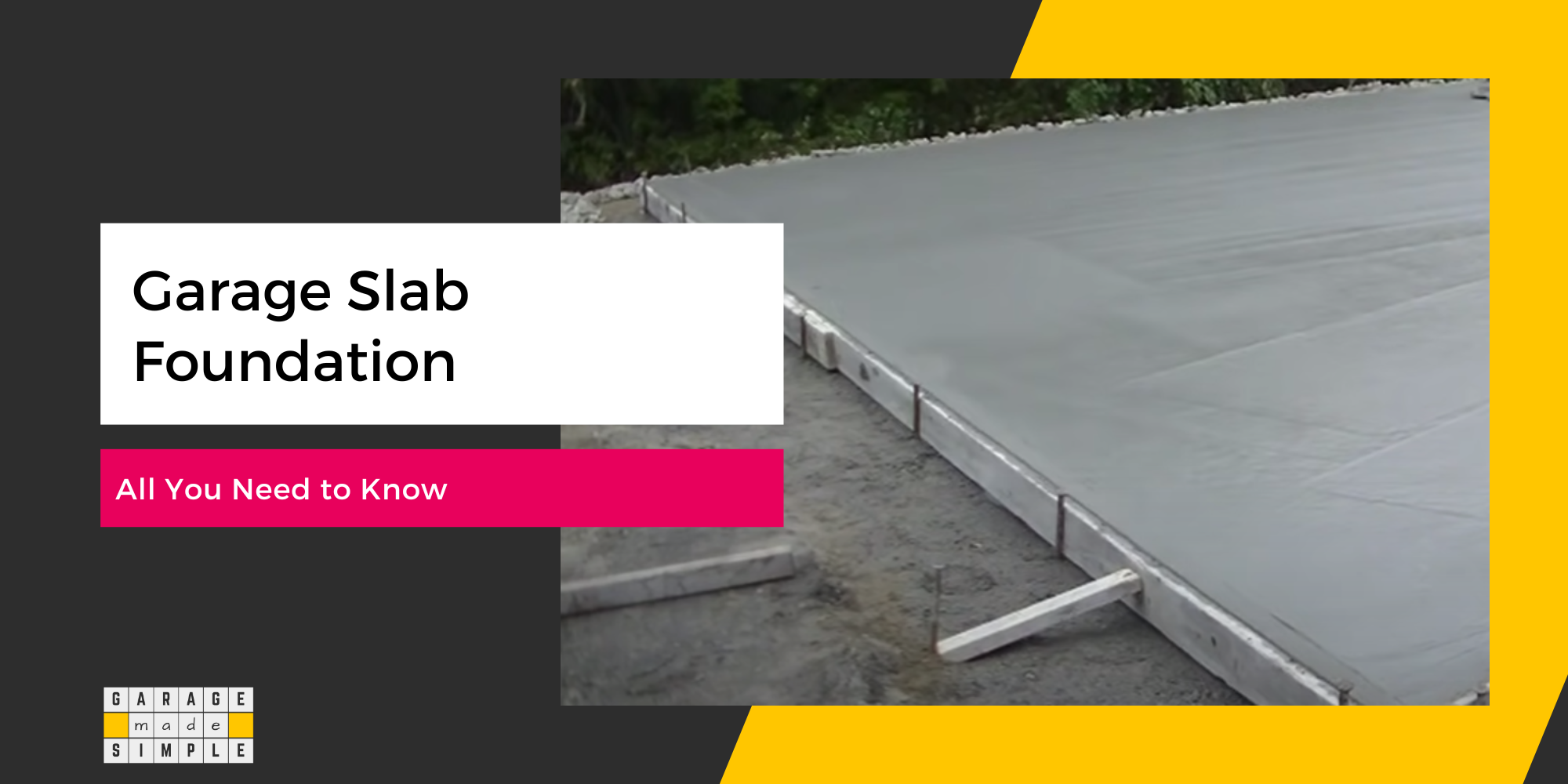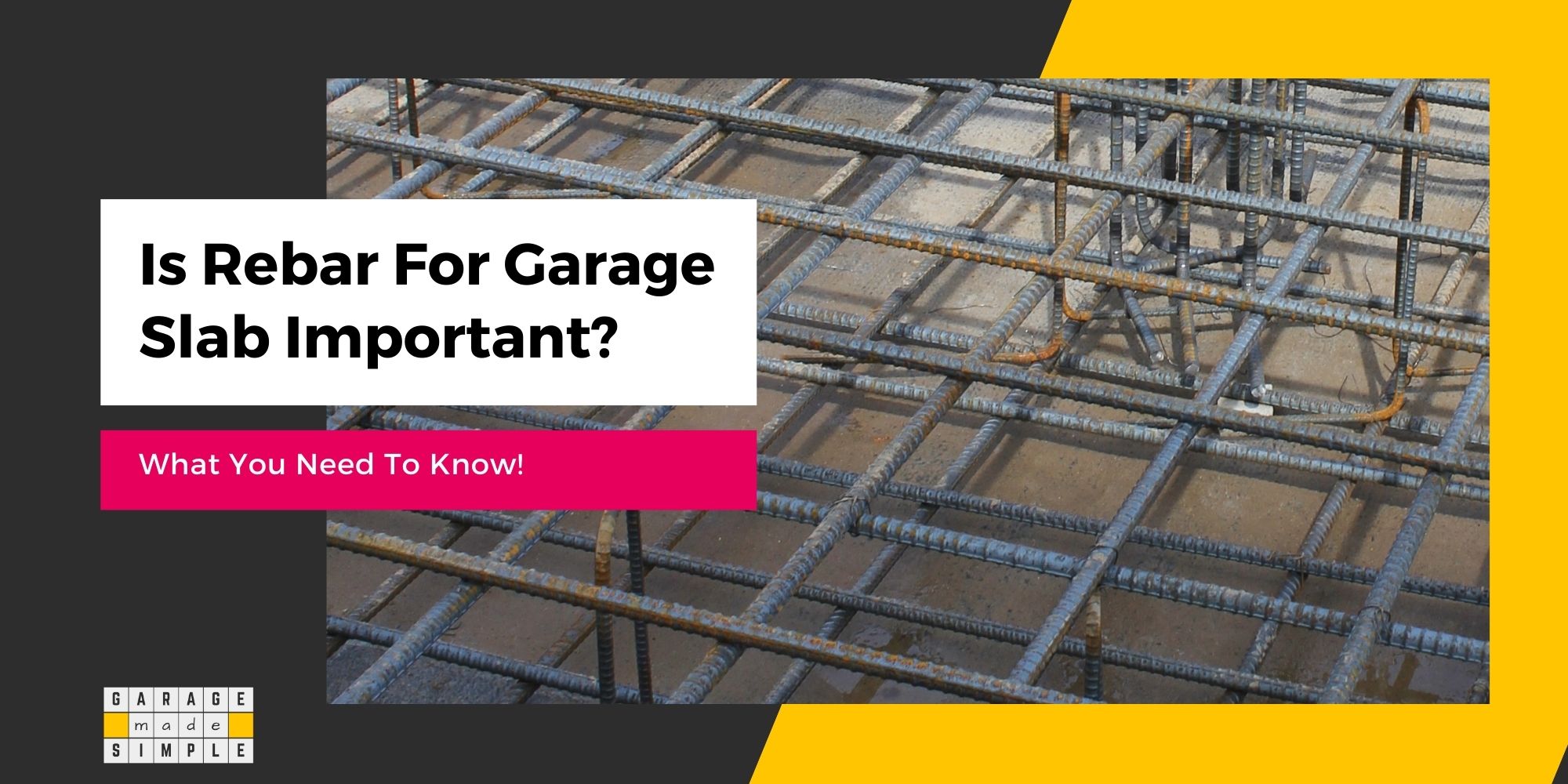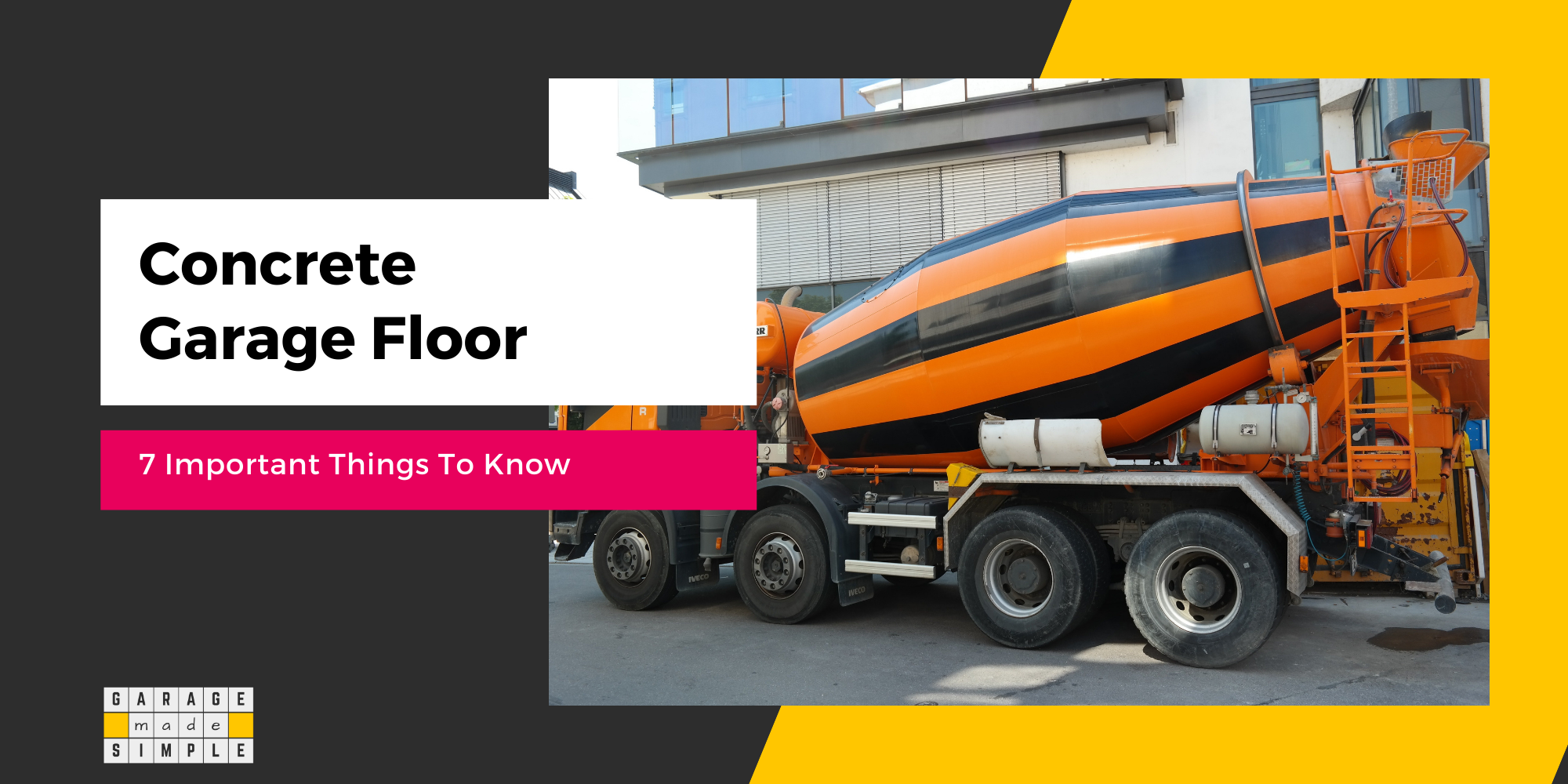How to Make the Best Sub Base for Concrete Slab? (Explained!)
garagemadesimple.com is a participant in the Amazon Services LLC Associates Program, an affiliate advertising program designed to provide a means for sites to earn advertising fees by advertising and linking to Amazon.com . The website is also an affiliate of a few other brands.
Do I Need a Sub-Base for a Concrete Slab?
The Sub Base for Concrete Slab is the middle layer of the “soil support system”. A good quality sub-base helps in distributing the load evenly, preventing localized soil subsidence, facilitating drainage, and reducing the risk of frost heave.
A concrete slab-on-grade foundation for a garage rests on the “soil support system” below it. The soil support system consists of three layers; subgrade, sub-base, and base. A well-compacted sub-base using high-quality aggregates results in a concrete slab that is strong, stable, and durable.
What is a Soil Support System?
So what is a “soil support system”? Quite often, in common parlance, the term “base” is used to mean what is actually the complete “soil support system”. American Concrete Institute defines the Soil Support System to be made up of 3 layers:
| Subgrade | This is the existing soil. The soil may have been improved by the addition of fresh soil. The soil layer is compacted. |
| Sub Base | The base consists of layers of gravel and sand over the sub base. This is smoothed out & compacted. |
| Base | The base consists of layers of gravel and sand over the sub-base. This is smoothed out & compacted. |

The quality of the soil support system, both in terms of the quality of materials used and the workmanship, plays a critical role in determining the load bearing capacity of the concrete slab. And, of course, this has a significant effect on the life of the concrete garage floor.
Why is Sub Base Important?
The sub-base is the middle layer of the soil support system and arguably the most important one. The material used for the sub-base is typically granular, such as crushed stone or gravel, which is compacted to form a solid but water-permeable layer.
An important function of the sub-base is to provide a stable and even foundation to the concrete slab. It helps distribute the weight of the slab evenly and prevents settling or shifting over time.
It is important to note that the subgrade by itself, almost always has the load-bearing capacity required. The total load on the subgrade below a garage floor is typically 125 psf (75 psf dead load from the concrete slab and 50 psf live load from cars, storage, etc.). Subgrades, depending on the soil type, have a load-bearing capacity of 2000 psf or more as per Concrete Network.
The sub-base is required to provide stability and minimize the transfer of ground movement, caused by hydrostatic or seismic stresses, to the concrete slab-on-grade.
Structural cracks in concrete slabs develop due to tensile, rather than compressive stresses. A slab is subjected to tensile or bending stress when a section is heaving or sinking. The sub-base reduces the tensile stress on a concrete slab caused by ground movement and prevents structural cracking.
The sub-base also helps to prevent damage from freeze-thaw cycles by allowing water to drain away from the slab and preventing it from becoming trapped underneath.
By providing a stable platform that permits drainage, the sub-base reduces the risk of the concrete slab cracking under load. The load-bearing capacity of the concrete slab increases and it can better withstand any tensile stress caused by ground movement.
How to Prepare the Soil Support System?
Subgrade Preparation
Drive four stakes at the four corners of the planned slab location. Add more stakes along the length and width for a large slab. Tie a string to all the stakes so that the slab rectangle is clearly marked out.
Remove the topsoil within this marked rectangle to a depth that is equal to the concrete slab thickness and the sub-base and base thickness.
Typically this will be 10 to 12 inches; 4 to 6 inches as concrete thickness, 2 inches as base thickness, and 4 to 6 inches as sub-base thickness.
Fill up any low areas, smooth out, and tamp the surface using a hand or mechanical tamper. The soil should be firm enough for you to walk on without leaving a footprint.
Geotextile & Sub Base
Lay a geotextile on the subgrade. This will prevent the aggregates, that form a part of the sub-base, from getting lost in the grade when it moves under hydrostatic or seismic stress.
Next put layers of compactible gravel, crushed stone, or recycled concrete to provide the strength to the sub-base. Layer the sub-base material such that the biggest pieces are in the bottom-most layer. The layers must be compacted at each stage for a solid sub-base.
Build up around 4 to 6 inches of this sub-base.
Base & Vapor Barrier
Lastly, add a couple of inches of fine gravel & sand and compact it. This layer is the base and will facilitate drainage.
A vapor barrier should be laid over the base before wire mesh or rebars are placed on chairs. The vapor barrier will prevent the concrete slab, above it, from absorbing any moisture from the ground below.
What is the Best Sub Base Material?
The role of the sub-base for a concrete slab is to provide structural strength & support and facilitate drainage.
The material most suitable for sub-base should, therefore, have the following characteristics:
- Be Inert & Free of Foreign Matter
- Have High Strength & Durability
- Should lack Cleavage Planes to Avoid Splitting
- Be Tough & Abrasion Resistant
- Have Random Angular Profile & Texture to Facilitate Interlocking
- Be Low in Moisture Content
Angular Gravel ticks all the boxes
The sub-base must be built up in layers and each layer compacted before the next layer is placed. For maximum load-bearing capacity and best drainage, the largest gravel stones should be in the bottommost layer. The size of the gravel should progressively reduce in subsequent layers.
Material Recommendation
The sub-base and base should use:
# 57 – The gravel stones are around ¾ “ long. This grade is ideal for use in the bottommost layer of the sub-base.
# 67 – The gravel stones are around ¾ “ and smaller. This grade is great for layers above the bottom layer.
# 8 – The gravel stones are around ¼ “ to ½ “ in size and are often referred to as pea gravel. This grade is suitable for use in the topmost layer of the sub-base or the bottom layer of the base.
# 10 – The gravel stones are ⅛ “ or smaller and are also known as screenings. It can be used as the topmost layer of the base, as an alternative to or along with coarse sand.
An important factor to keep in mind is that the gravel profile should be sharp and angular rather than smooth and rounded. This ensures good interlocking between each piece and the result is higher strength and better drainage.
Thank you very much for reading the post. I do hope you found it informative and useful.






